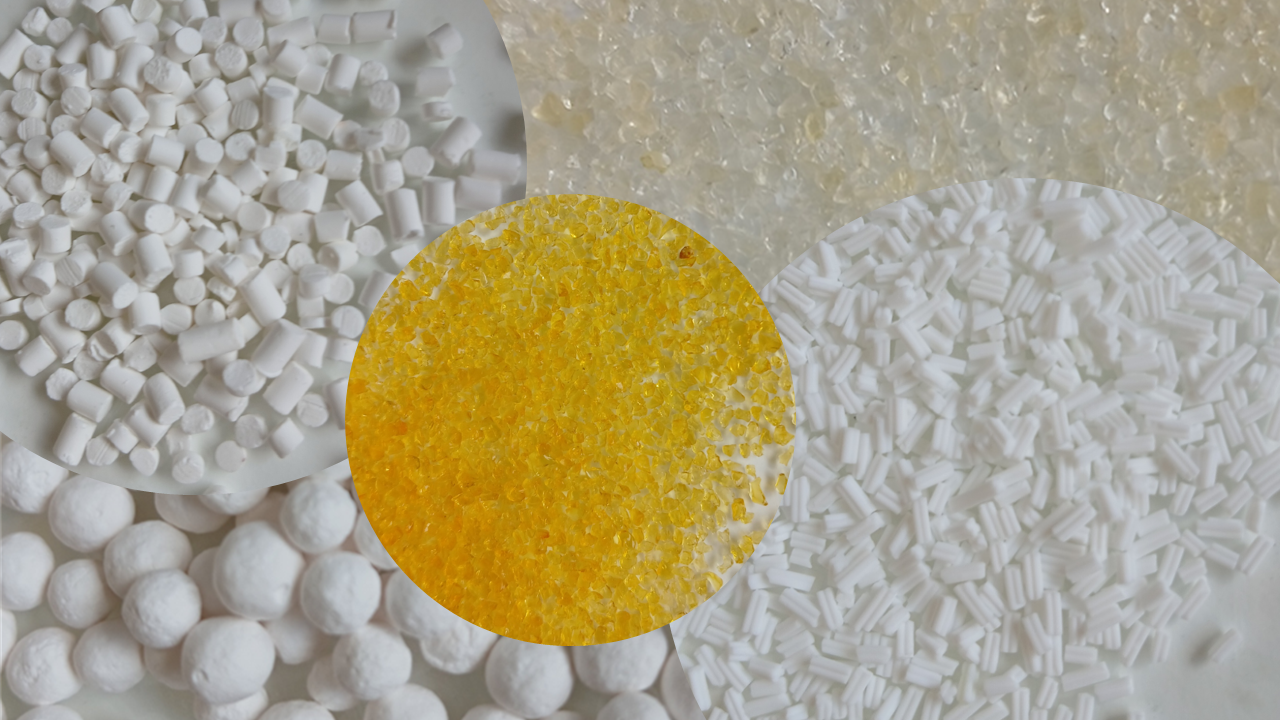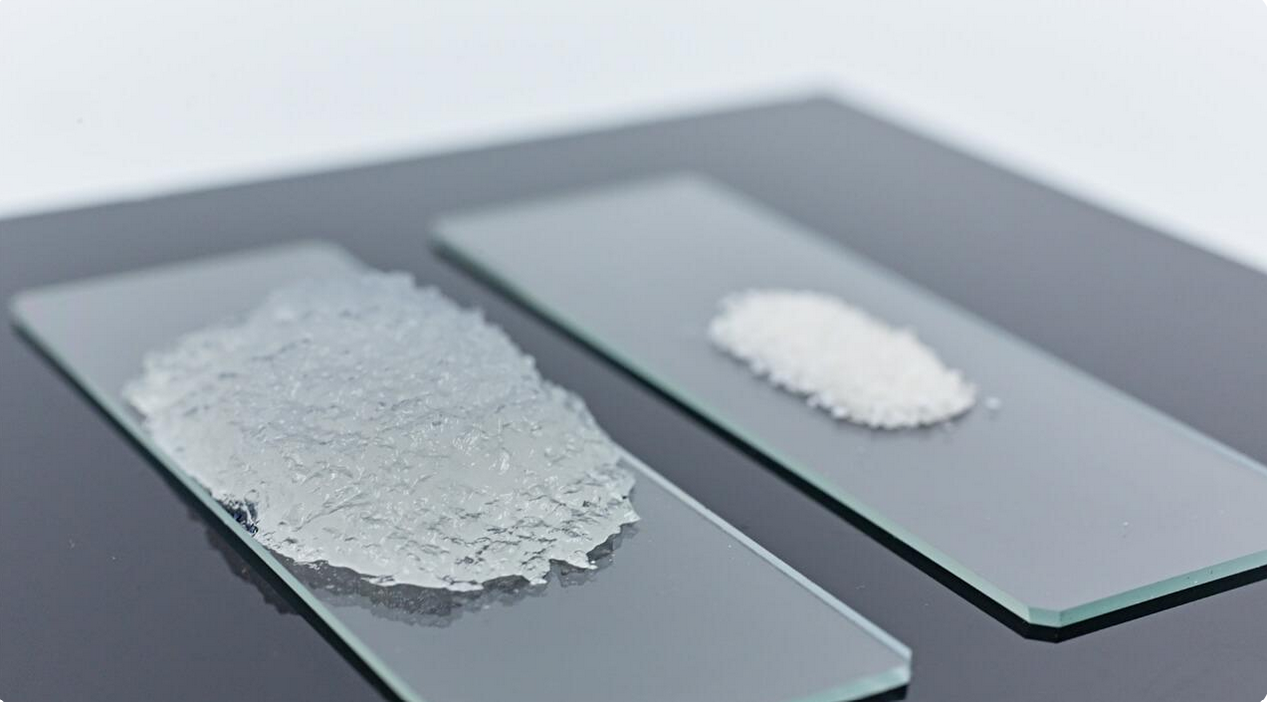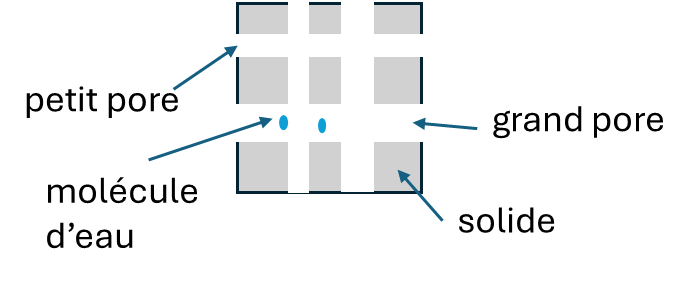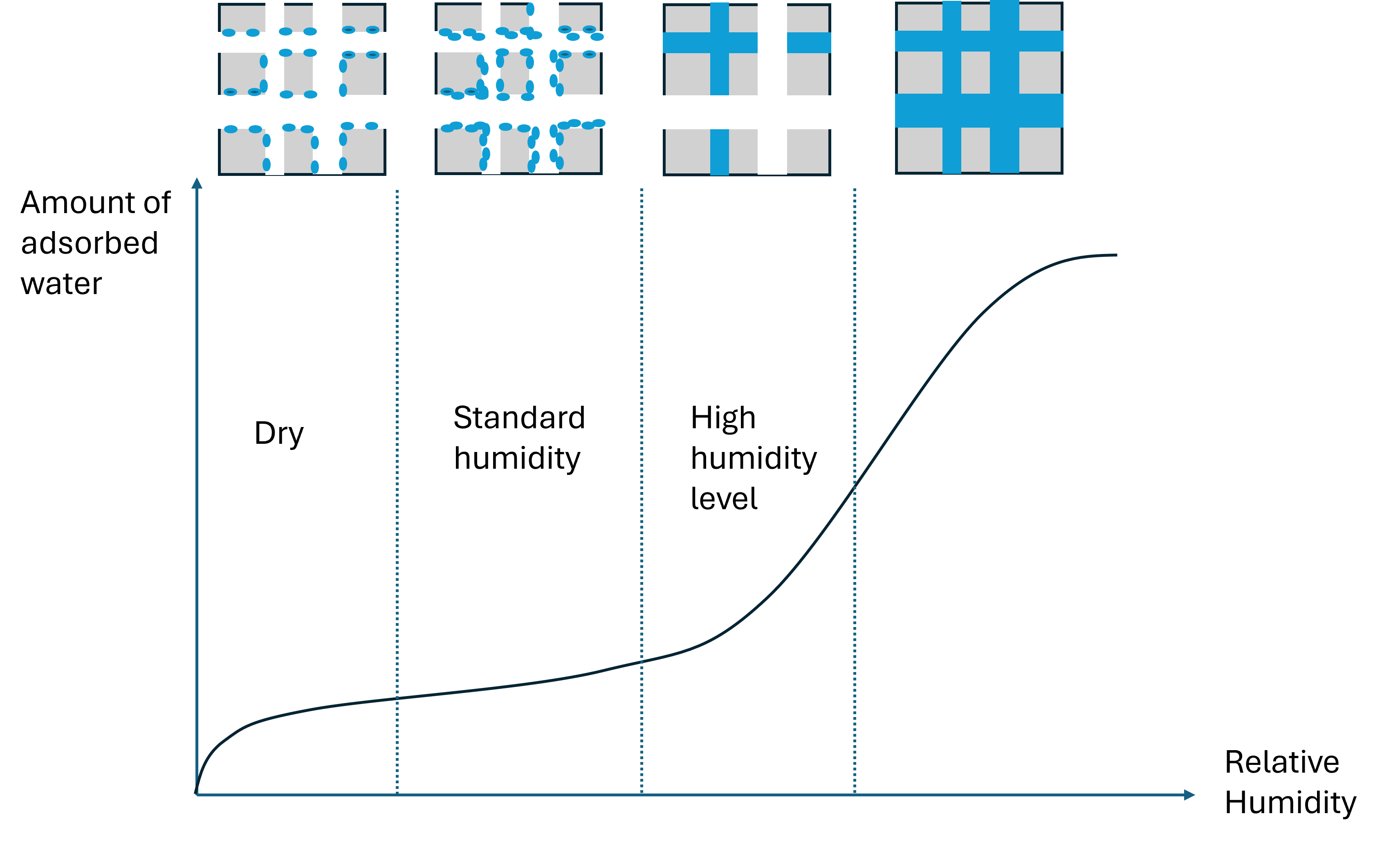
October 9, 2025
There are three main families of materials that capture moisture. Their effectiveness varies according to their structure, their adsorption capacity and their ease of regeneration.
Les mineral porous materials are very sturdy and do not change their structure in contact with water. They come in the form of powder or granules, such as silica gel, zeolite or Air Sponge. An exception: clay, which swells when in contact with water.
✔️ Advantage: high solidity
❌ Disadvantage: adsorbs less water

Superabsorbent polymers, or hydrogels, are molecular chains capable of absorbing large quantities of water. They are found in particular in diapers for babies.
✔️ Advantage: high absorption capacity
❌ Disadvantage: can mold over time and become fragile when swollen

Dehydrating salts, like calcium chloride, react with water and liquefy. They are often used in tablet form in commercial dehumidifiers.
✔️ Advantage: very absorbent
❌ Disadvantage: require regular replacement and emptying of the tank

To effectively regulate humidity, a material must:
The Air Sponge product is characterized by a optimized adsorption kinetics, allowing it to avoid condensation even during rapid changes in humidity. It regenerates naturally, without heat, as soon as the air returns to normal levels.

Conversely, salts and polymers, although effective in the short term, degrade or require constant maintenance. Silica gels and zeolites are solid, but require regeneration at high temperature, which limits their use.
Under certain conditions, Relative humidity can increase very quickly:
To avoid condensation, the material must therefore adsorb rapidly. Air Sponge maximizes the area in contact with air and reduces the diffusion distance of water in the porous network. The crystals are attached to a flexible support, which deploys a very large surface and allows water molecules to be captured instantly.
This format has several advantages:
The material used is a white powder composed of crystals of about 100µm in size. These crystals are largely made up of vacuum: a network of extremely fine pores in which water molecules circulate.
These pores measure an average of 10 nanometers in diameter, 10,000 times smaller than a hair. This structure makes it possible to obtain a porous surface of more than 200 m² per gram, equivalent to the area of an apartment in a thimble!
The pores are interconnected, allowing water to flow rapidly through the entire material. This organization guarantees a homogeneous and sustainable humidity regulation.
Water molecules in the air come into contact with the surface of the material and penetrate the pores.

This phenomenon is illustrated by a curve called adsorption isotherm, essential for evaluating the performance of a material. At 100% relative humidity, all pores are saturated and the porous network is completely filled with water.

Air Sponge combines performance, durability and ease of use. Its unique porous network gives it ultra-fast adsorption, natural regeneration and lasting efficiency, without maintenance or energy. Today it is one of moisture absorbents the most efficient to prevent condensation and regulate the air in any type of environment.